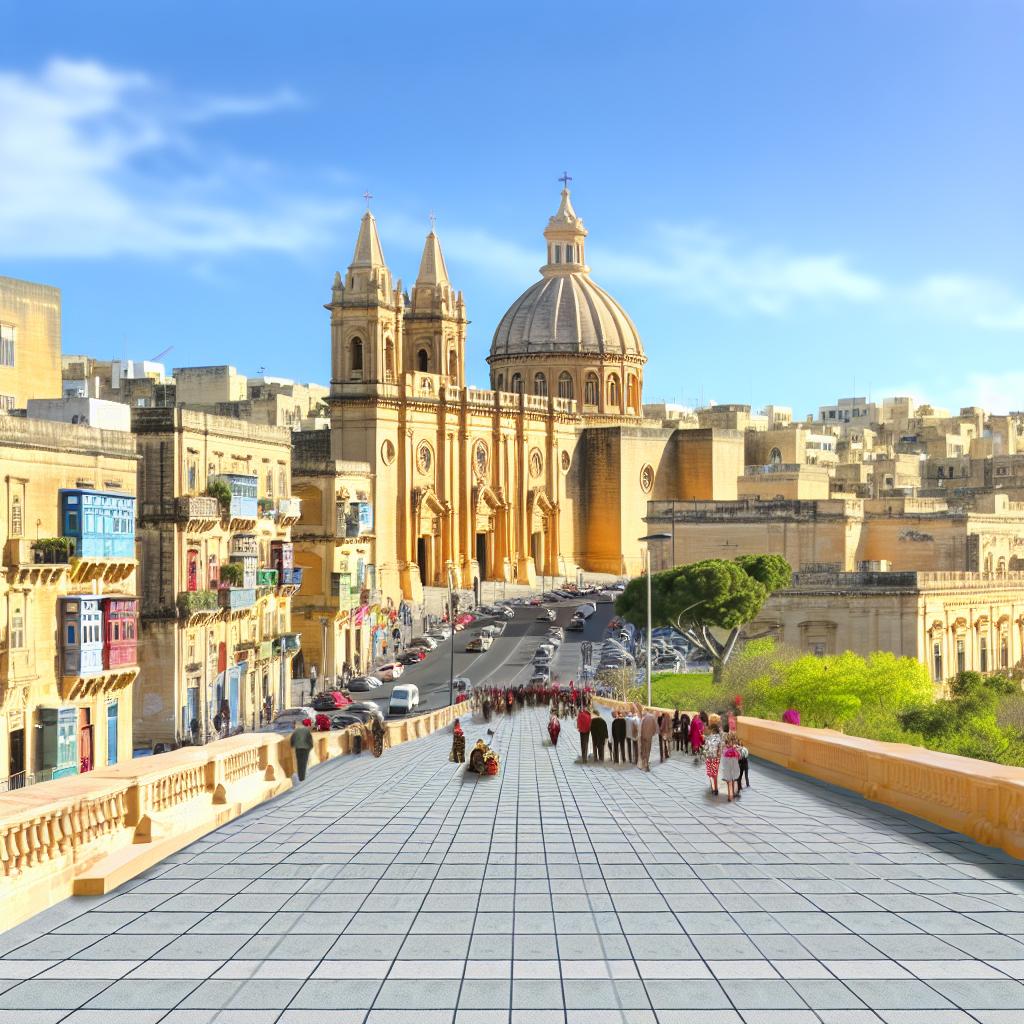Overview
St. John’s Co-Cathedral is located in Valletta, the capital city of Malta. Constructed by the Order of St. John in the 16th century, it stands as a masterpiece of Baroque architecture and a symbol of Malta’s historical and cultural heritage. This architectural gem has grown to be one of Malta’s most visited landmarks, attracting tourists and art enthusiasts from around the world.
History
Originally, St. John’s Co-Cathedral served as the conventual church for the Knights of St. John. The church was commissioned in 1572 by Grand Master Jean de la Cassière, and it was designed by the Maltese architect Girolamo Cassar. The cathedral was consecrated in 1578. With its austere exterior, it masks an opulent interior that vividly contrasts with its façade.
The history of St. John’s Co-Cathedral is intricately tied to the Order of St. John, a significant religious and military order. This group played a pivotal role in the defense and administration of Malta during the medieval and early modern periods. Upon taking control of Malta in 1530, the Knights established Valletta as their capital, and the construction of the cathedral was a part of their efforts to fortify and embellish the city, not only for defensive purposes but also to showcase their devotion and artistic patronage.
The cathedral’s design reflects the characteristic style of its architect, Girolamo Cassar, who was instrumental in the layout and construction of numerous significant buildings in Malta. Cassar’s initial design focused on structural integrity and spatial clarity, which provided the perfect canvas for later decorative enhancements.
Architecture
The cathedral is an exquisite example of Baroque architecture, particularly noted for its resplendent interior, which was later enriched by the contributions of artist Mattia Preti. The ceilings and walls are adorned with intricate carvings, frescoes, and gilded decorations. The marbled floors consist of gravestones telling the history of the knights with Latin inscriptions.
From an architectural standpoint, what sets St. John’s Co-Cathedral apart from other historical buildings is its duality—the stark versus the splendid. Externally plain, its façade mirrors the typical fortification style of Valletta, a city fortified to withstand sieges. The interior, however, reveals a stark contrast, richly ornamented with art and intricate decorations that draw upon a wide spectrum of Baroque elements.
Preti’s contribution is a testament to the Baroque admiration for dramatic contrasts and emotional intensity. His extensive work throughout the cathedral’s interior adds layers of visual storytelling, encapsulating the life and passions of John the Baptist and depicting scenes rich with spiritual symbolism.
Main Attractions
Among the cathedral’s many treasures, one of the most significant is the painting The Beheading of Saint John the Baptist by Caravaggio, located in the Oratory. This masterpiece is the only signed work by the renowned artist. The cathedral also houses important works of art and historical artifacts.
Visitors can explore the intricacies of various chapels, each dedicated to a different saint and belonging to different Langues (administrative divisions) of the Knights. The chapels themselves are remarkable examples of the craftsmanship and artistry typical of the period, with elaborate altars, sculptures, and tapestries that reflect the individual Langue’s patronage and devotion.
The Oratory
The Oratory is particularly noteworthy. It is adorned with their unique white marble columns and contains a UNESCO World Heritage status piece, the Caravaggio masterpiece. The Oratory serves as an exquisite blend of art and faith.
The importance of The Oratory goes beyond its physical beauty. It is a space that has been carefully curated to enhance the spiritual experience through its art and architecture. Caravaggio’s painting, notable for its emotional depth and technical sophistication, remains a focal point for art historians and enthusiasts who are eager to witness his tale-telling prowess firsthand.
Visitor Information
St. John’s Co-Cathedral is open to visitors throughout the year, although times may vary depending on religious services and other events. Visitors are encouraged to dress respectfully, as it remains a place of worship. For more detailed information about visiting hours and entry fees, you can visit the official website of St. John’s Co-Cathedral.
Proper attire is requested to maintain the sanctity and respect of the space. Visitors are encouraged to allocate ample time not only for observing the art but also for reflecting on the historical significance embodied in the cathedral’s walls.
Guided tours offer an enriching experience, providing insights into the historical, artistic, and architectural facets of the building, making it an educational venture for those interested in history and art. By visiting, individuals have the opportunity to walk through Malta’s rich history, experiencing the beauty and solemnity that have defined the St. John’s Co-Cathedral for centuries.
The cathedral, through its magnificence, stands as a testament to the enduring legacy of the Knights of St. John and the cultural tapestry of Malta, offering a glimpse into the island’s past while maintaining a place of reverence and historical continuity.

